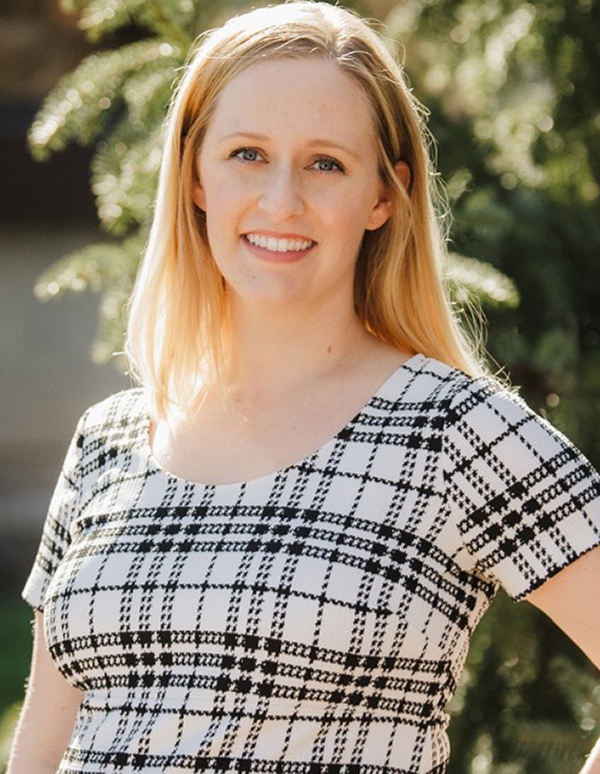The expansion of oral chemotherapy agents since 2000 has transformed the treatment landscape. More than 150 novel oral anticancer medications are currently U.S. Food and Drug Administration approved, with new agents continuously in the pipeline. When caring for patients who are taking oral therapies, oncology nurses and pharmacists can work together to handle drug refills, deliver patient education, and manage the entire treatment cycle—including adverse events.

“As with all patient-centered care, an interprofessional approach is best,” ONS member Julianne Brogren, MSN, RN, CPPS, clinical manager of patient safety for the Children’s Hospital Association, said. “Each discipline has their own expertise, so working together allows us to focus on different aspects of care and ensure that patients receive the attention they deserve. Caring for patients who are receiving oral therapies can be so complex, and without an invested nursing–pharmacy partnership, there is bound to be inefficiencies and potential for safety events.”
In her previous position as an oncology education specialist at The University of Kansas Cancer Center in Westwood, Brogen worked closely with Marshall A. F. Johnson, PharmD, MHA, pharmacy clinical coordinator of oral chemotherapy and specialty pharmacy at the institution.
Johnson said that managing oral chemotherapy can be challenging for patients and the healthcare team, but oncology pharmacists provide vital support for managing oral chemotherapy. Pharmacists share and own responsibilities for providing accessible, safe, and effective care for patients who are receiving cancer therapies, minimizing any significant impact on their quality of life and treatment adherence. The pharmacists’ role goes beyond dispensing medication—they work closely with the healthcare team to develop individualized treatment plans, provide patient education, and monitor patients’ overall treatment progress.
“Pharmacies have opportunities to ensure appropriate safety measures are in place for oral agents to match the stringent policies surrounding safe administration of parenteral chemotherapy,” Johnson said. “Despite oral therapies’ conveniences, they present significant logistical challenges such as insurance preference for specialty pharmacies, management of patient financial burden and access, communication gaps across the care team and with patients, clinical and adherence challenges, and more. When caring for patients who are taking oral therapies, oncology pharmacists and oncology nurses must collaborate to ensure patient safety and therapeutic outcomes are not at risk.”

Clear Oral Chemotherapy Standards Guide Role Delineation for Oncology Nurses and Pharmacists
Johnson said that historically, ordering physicians and advanced practice providers were responsible for managing oral chemotherapy treatment—including ordering, refilling, monitoring, providing patient education, and ensuring patient adherence. Collaboration between oncology nurses and pharmacists was minimal and inconsistent.
An interprofessional team of oncology nurses, pharmacists, and quality team members at The University of Kansas Cancer Center, which Brogen partly spearheaded, identified high variation in oral chemotherapy workflows, lack of standardized safety checks, inefficient use of pharmacy time, and inadequate data collection for all clinics. Using lean quality improvement methodology, they created rigorous safety standards for oral chemotherapy, improved efficiency, and designed workflows that support data collection and process control.
“Through direct observations, chart audits, and verbal feedback, we realized the process for managing patients on oral chemotherapy, including providing refills, varied greatly,” Brogren said. “We also discovered that previous improvement efforts were not consistently followed, which left room for possible errors. Because of the potential for serious harm, we took a proactive deep dive into how we could make the refill process safer for our patients.”

Brogren said that the team found that the safety note the nurse completed prior to refilling the oral chemotherapy order was used inconsistently. Using lean methodology, the team developed a standard work process for completing the safety note, trained all of the cancer center nurses, and provided data upholding the note’s role in patient safety.
“When nurses used the safety note, the refill defect rate was less than 0.4%,” Brogren said. “We also tracked compliance with completing the safety note and found a significant increase after it was established as standard work. It’s now included in The University of Kansas Cancer Center’s nursing orientation.”
“The training helped us build policy and standardized prescribing and maintenance for all oral oncolytic agents to keep our patients safe,” ONS member Melynn Jones, RN, BSN, unit educator at The University of Kansas Cancer Center, said. “Previously, we treated oral agents like any other medication. Patients were educated by the physician or advanced practice provider, but pharmacy staff weren’t involved. Nurses would receive refill requests for oral oncolytic agents, and they would refill the medication, just like it was a prescription for something as simple as Zofran.”
Meanwhile, the pharmacy team found that as the number of completed oral chemotherapy refill notes increased, refill prescription request errors reaching the pharmacist prior to final verification dropped by 90%, which improved oral chemotherapy prescription processing efficiency and reduced refill delays.
“Our comprehensive approach to improving our oral chemotherapy process not only led to standardization of practices to align with standards applied to parenteral chemotherapy to ensure the safety of the patient across all disciplines but also the implementation of new policy, new technology, a reduction in oral chemotherapy associated lead time and prescribing errors, and growth of prescription capture and revenue for the health system’s specialty pharmacy,” Johnson said.
A Venn Diagram of Patient Education
Today, Jones said, the cancer center’s advanced practice providers, nurse coordinators, and clinical oncology pharmacists are all responsible for providing education to patients who are starting a new oral agent, each with a unique approach. For example, a nurse coordinator educates about the patient’s schedule and the process surrounding how the patient will receive their oral agents, involving supportive care staff like social workers, dieticians, and oncology psychologists when needed.
Meanwhile, Johnson explained that the pharmacist covers a wide breadth of topics during patient education. Topics include expectations and possible outcomes of therapy, duration of therapy, safe use and handling, storage and disposal, potential side effects—including prevention, minimization, and management—and more.
“Of course, some cross coverage of education occurs, but knowing that it takes the average adult three to four exposures to a new concept to really grasp it—the more education we provide, the more our patients grasp,” Jones said.
Pharmacy’s Role in Improving Access and Reducing Financial Toxicity
Access to oral agents remains a challenge because of the high cost associated with the therapies. Although patients rely on insurance to help pay for the care they need, it’s also a source of confusion and frustration, Johnson explained.
“Patients are already going through one of the worst times in their life, and the last thing they need to worry about is if they are going to receive their medication in a timely manner or at all,” Johnson said. “Our health system’s specialty pharmacy team handles all things billing and access for our patients who are taking oral chemotherapy. Because of our team’s efforts, the average copay for patients who are receiving an oral agent from our specialty pharmacy is $20 per cycle.”
For every patient starting new oral chemotherapy treatment, the specialty pharmacy investigates benefits; supports prior authorization and appeals, Medicare Part B filing, financial assistance, and grant and foundation assistance; and connects them to manufacturers’ assistance programs.
“Our goal always has been to remove this type of operational work from the clinic space to allow our clinic oncology nurses and pharmacists to practice at the top of their licenses and really focus on our patients’ clinical outcomes and experience,” Johnson added.
Collaboration Requires Communication
Brogren, Jones, and Johnson all said that the successful collaboration between oncology nurses and pharmacists at The University of Kansas Cancer Center in terms of oral agents drives them to continually improve. For any improvement project, Brogren said that healthcare professionals should regularly Plan, Do, Study, and Act to continually evaluate and improve processes and initiatives.
From an oncology nursing perspective, Brogren said that the partnership helps her team to see the pharmacist’s perspective on the importance of an oral chemotherapy safety note. “Even simple aspects, such as where to view this note in the electronic health record, were different for nursing and pharmacy. So, evaluating the challenges from both sides allowed us to see why workarounds and inconsistencies had developed,” she said.
On the other hand, Johnson said that from a pharmacy standpoint, clear communication, understanding each profession’s strengths, collaborative training and workflows, and remembering that everyone has the patient’s best interests in mind has helped his team thrive. Learn more about Johnson’s suggestions for a successful collaboration between oncology nurses and pharmacists in the sidebar.
“Often, nursing doesn’t realize the challenges pharmacy is facing and vice versa,” Brogren said. “Every person has the intention of providing the safest care possible to the patient, but without designing a transparent process that includes each discipline involved, this isn’t possible.”






